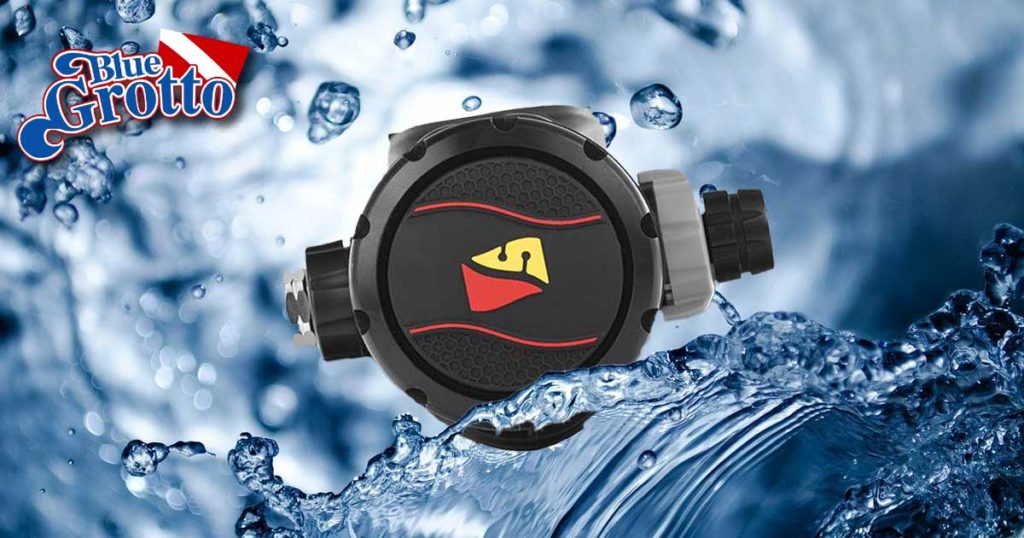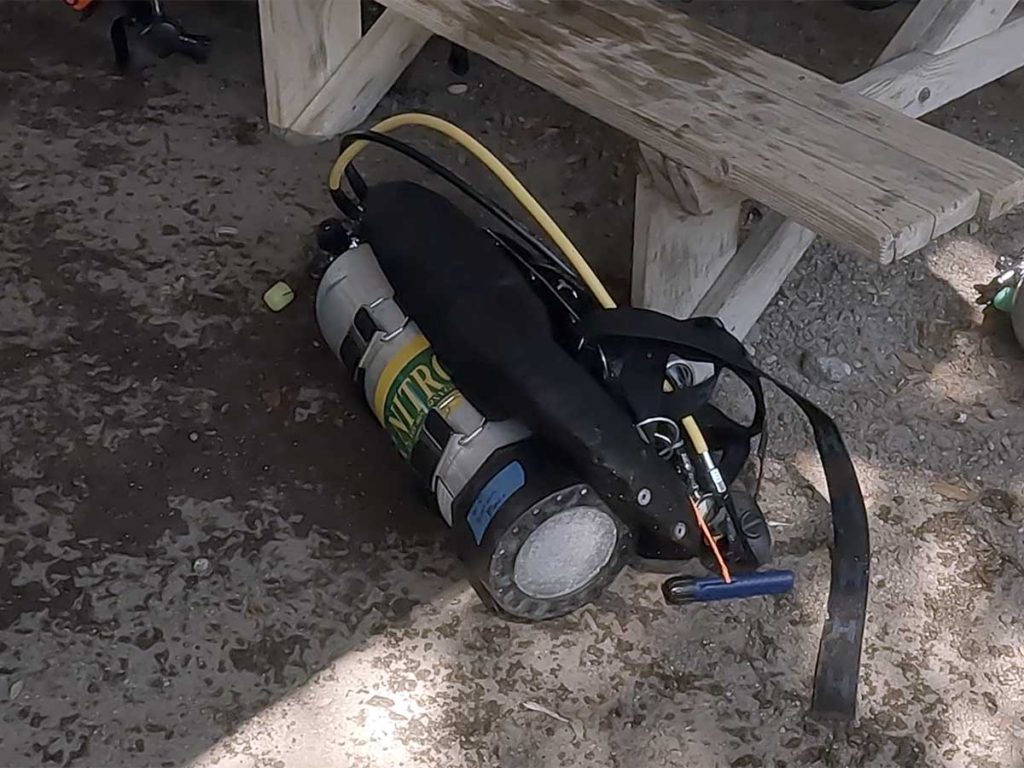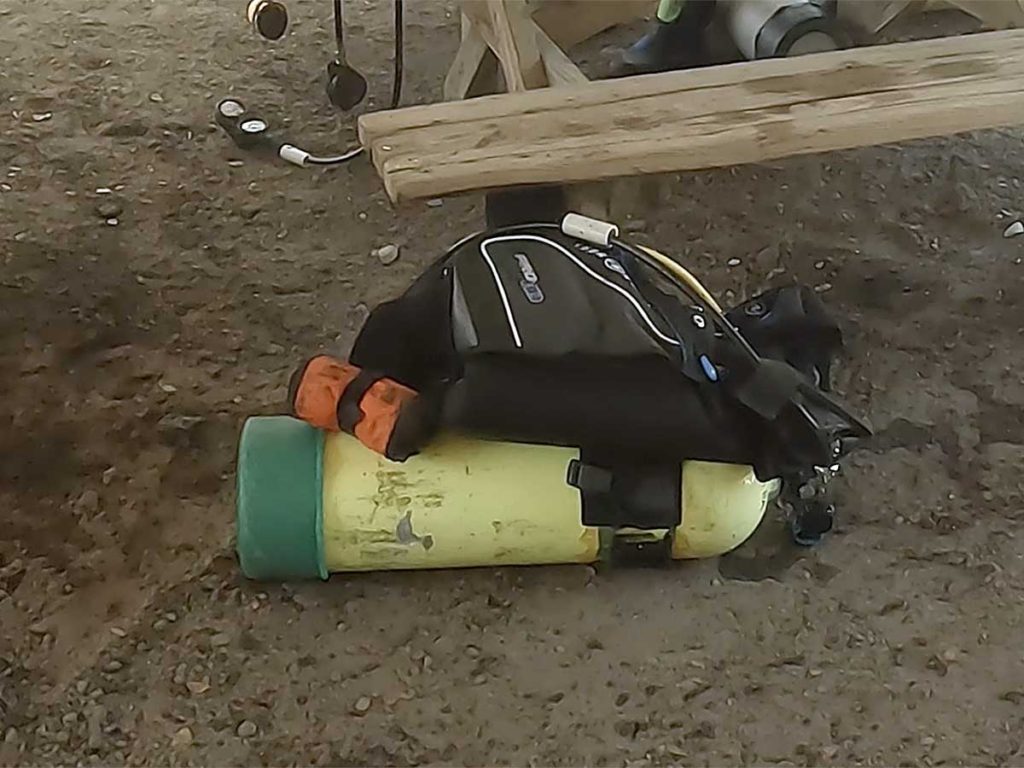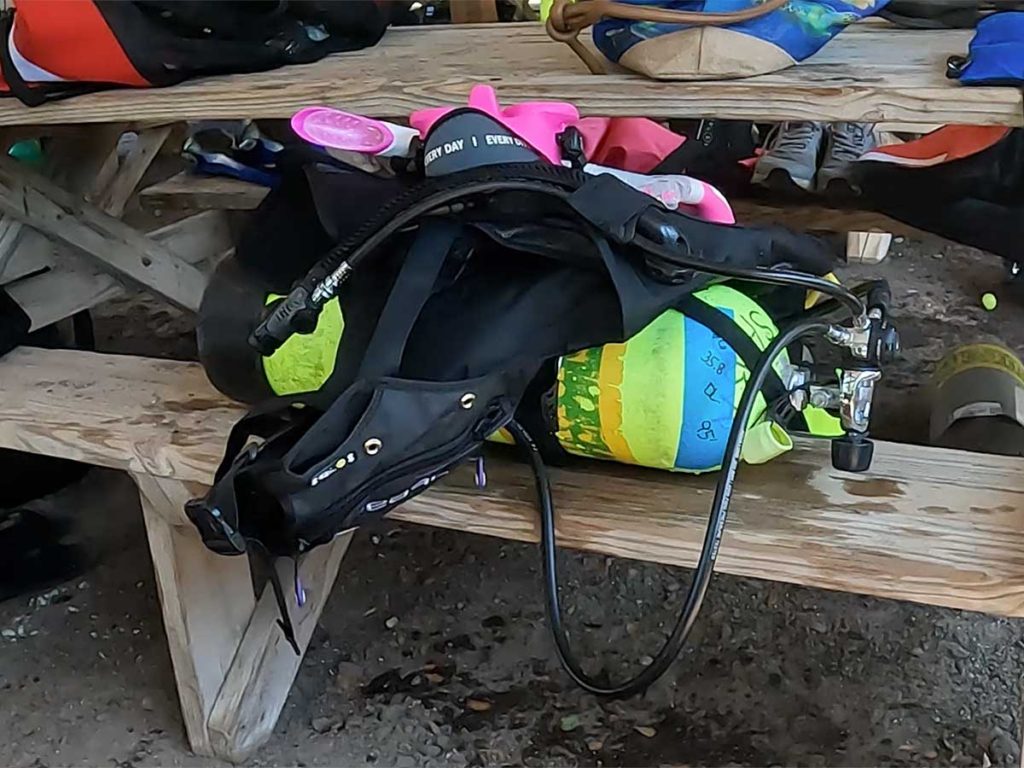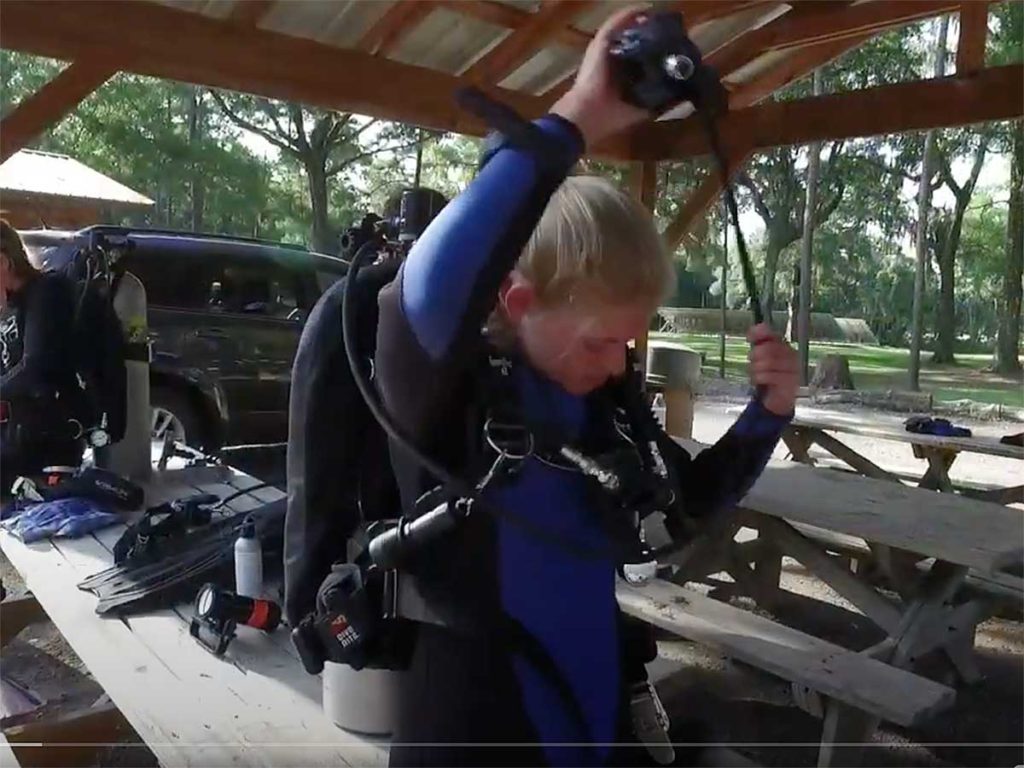Here is something we occasionally see, not just at Blue Grotto but at other dive sites throughout north-central Florida. Divers exiting the water will rush to the nearest faucet, spigot or shower head to rinse items such as BCs and regulators in fresh water. They’re then shocked when we tell them they are rinsing their gear in the same water in which they were just diving.
This generally happens with divers who learned in salt water from instructors who only teach in salt water and never imagined that students might one day dive in fresh water. Such students are often told they must always rinse their gear in fresh water after every dive. No exceptions.
Make no mistake: Thoroughly rinsing your gear in fresh water after every dive is essential when you dive in salt water. If you do not, severe equipment damage is inevitable. But do you need to rinse items such as BCs and regulators when diving in fresh water? No.
This is not to say you can dive Blue Grotto and get away with not rinsing any of your gear. If you follow the recommendations in this article, you will still need to rinse the dirt off your boots. This is why we have the boot rinse station at the top of the steps leading to the bathhouse.
Dirt is the enemy
While you will not have to contend with salt water at Blue Grotto, there is still the issue of dirt. You need to keep your equipment out of the dirt as much as possible. Dirt can clog moving parts, scratch the faces of gauges and cause other damage.
The best way to accomplish this is to not do something your instructor may have told you to do when you first learned. That is, lying tanks on the ground — especially if they have regulators and BCs attached.
Where did this rule come from?
Originally, all scuba cylinders had round bottoms. Steel tanks still do. The tank boots available in the 1950s and 1960s were not very good at keeping cylinders standing upright. Making matters worse, early tank valves could be easily broken off, turning a scuba cylinder into a rocket. The best way to prevent this was never to leave a tank standing upright.
The 1970s saw the introduction of aluminum cylinders with flat bottoms. These are more resistant to being knocked over. Additionally, more modern tank valves are not likely to be broken off, although they could be damaged in a fall. This doesn’t mean it’s okay to leave unattended tanks standing upright. Doing so is only okay if:
- Tanks are standing against a wall or in a group with other cylinders.
- They are not on a rolling boat deck or in a high-traffic area.
- The tanks do not have BCs or other equipment attached to them.
We cringe with we see this
We often see divers who leave their scuba cylinders lying in the dirt with BCs and regulators attached. This is asking for trouble.
If you must do this, keep your BCs and regs on top of the tank, as far from the dirt as possible.
The worst thing you can do is leave a tank lying on top of a BC and regulator. This is when the greatest amount of damage will occur.
The better alternative
There is a better alternative if you want to keep your expensive gear out of the dirt yet don’t want to leave tanks standing upright unattended. That is, take advantage of our many picnic tables and tank racks.
Doing so allows you to keep cylinders lying on their sides while at the same time avoiding contact with dirt.
Picnic tables are a godsend for divers. They not only help you keep your gear out of the grime, but the tabletops are also a perfect height to support tanks when donning scuba units.
You can even put cylinders on top of picnic tables if they do not have equipment attached. The tanks will most likely want to roll, but you can stop this by blocking them with a weight.
A clean wetsuit is a happy wetsuit
No one wants to get into a dirty wetsuit, especially if the dirt is on the inside of the suit. If you get dirt on your wetsuit while removing it, you will need to rinse it. You can avoid this by not standing in the dirt while removing your suit. There are a couple of ways you can do this.
- Don or remove your suit only while standing on a clean surface, such as the large deck by the water or the concrete porch surrounding the bathhouse.
- Alternatively, you can start by sitting on top of a picnic table with your feet on one of the benches. You can both don and remove your wetsuit this way without it ever touching the dirt.
If you follow these recommendations, the only thing you will need to rinse following your dive are your wetsuit boots. And you will be a much happier diver.


